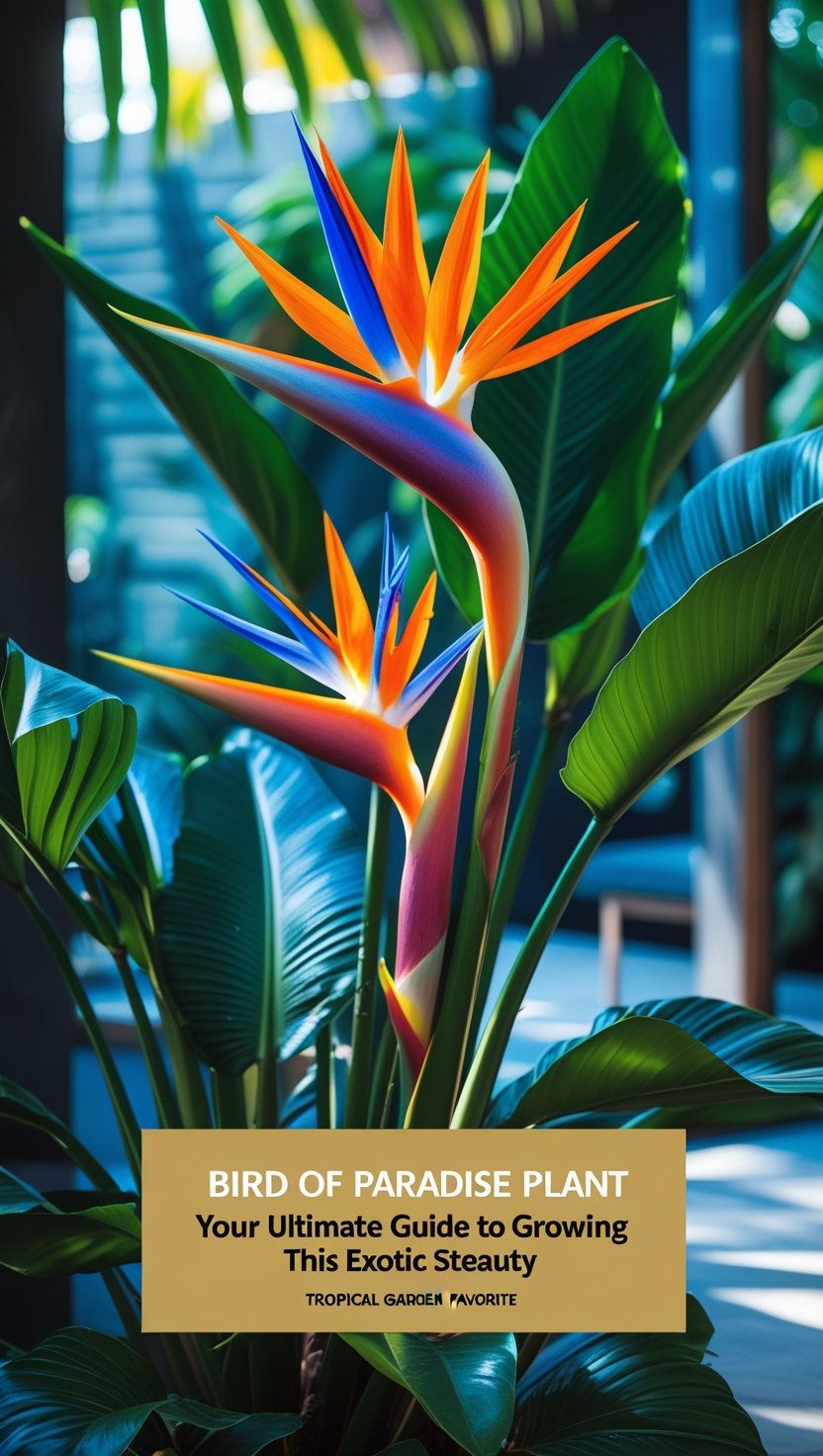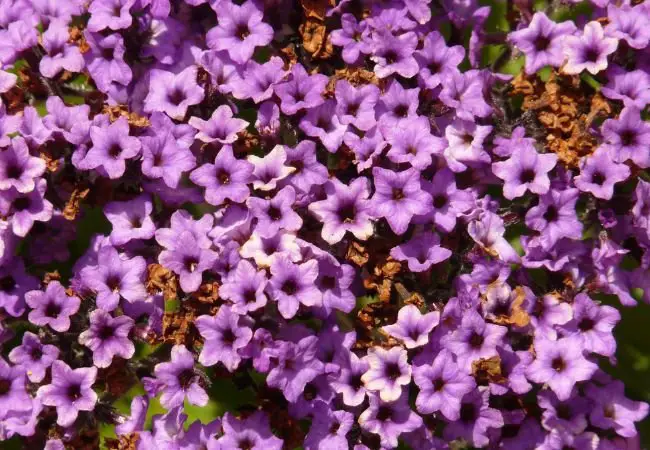Discover everything about the Bird of Paradise plant (Strelitzia reginae)—its size, care tips, and where to buy. Perfect for USA gardeners!

Hey there, plant lovers! I’m Ashley Scott, and with 10 years of gardening experience under my belt, I’ve grown my fair share of plants. But the Bird of Paradise (Strelitzia reginae) holds a special place in my heart. Its vibrant, bird-like flowers and lush foliage make it a standout in any garden or home. Whether you’re wondering about its size, curious about care tips, or searching for where to buy one, this guide has everything you need. Let’s dive into the world of this tropical beauty, perfect for gardeners across the USA!
Here’s an easy and verified chart for Bird of Paradise (Strelitzia reginae):
| Category | Details |
|---|---|
| Botanical Name | Strelitzia reginae |
| Common Name | Bird of Paradise |
| Plant Type | Evergreen perennial |
| Hardiness Zone | Zones 10-12 |
| Sun Exposure | Full sun to part shade |
| Soil Type | Well-draining, fertile soil |
| Watering Needs | Moderate; prefers regular watering |
| Growth Habit | Clumping, upright |
| Height/Spread | 3-5 feet tall, spread of 2-3 feet |
| Special Features | Striking orange and blue flowers resembling a bird’s head; blooms throughout the year in tropical climates; attracts birds and butterflies; drought tolerant once established; ideal for tropical gardens or as a container plant |
What is the Bird of Paradise Plant (Strelitzia reginae)?

The Bird of Paradise, scientifically known as Strelitzia reginae, is a tropical plant famous for its eye-catching flowers that look like a colorful bird in flight. Its common name, Bird of Paradise, comes from this unique bloom, which features bright orange and blue petals. Native to South Africa, it’s a favorite for adding an exotic touch to gardens and indoor spaces.
The plant grows large, paddle-shaped leaves and can reach up to 5 feet tall outdoors. I’ll never forget the first time I saw one blooming at a botanical garden—it was love at first sight! Since then, I’ve grown several in my own garden, and they always steal the show.
Where Did the Bird of Paradise Come From?
The bird of paradise origin traces back to the coastal regions of South Africa, where it thrives in warm, subtropical climates. It was introduced to Europe in the 18th century and named Strelitzia reginae after Queen Charlotte of Mecklenburg-Strelitz, wife of King George III of England. How cool is it to have a plant with royal roots in your backyard?
In its native habitat, sunbirds pollinate the flowers by perching on the “beak” to sip nectar. Here in the USA, insects often take over that job, or you can hand-pollinate if you’re growing it indoors. Knowing its history makes me appreciate it even more!
For more on its background, check out the White Bird of Paradise Plant.
How Big Does the Bird of Paradise (Strelitzia reginae) Get?
If you’re curious about bird of paradise strelitzia reginae size or height, here’s the scoop. Outdoors, in the right conditions, it can grow up to 5 feet tall and spread 3 to 4 feet wide. Indoors, it usually stays a bit smaller, around 3 to 4 feet tall, depending on the pot and care.
In my garden, I planted mine in a sunny spot with plenty of room, and it’s now a gorgeous focal point. The leaves can stretch up to 18 inches long, and the flower stalks rise above the foliage, adding extra drama. Whether you’re growing a 200mm Bird of Paradise Strelitzia reginae or a mature plant, it’s a perfect size for most spaces!
How Do I Care for a Bird of Paradise Plant?
Caring for a Bird of Paradise Strelitzia reginae isn’t hard, but it does need some TLC. Here’s what I’ve learned over the years:
- Light: It thrives in bright, indirect light. Outdoors, full sun to partial shade is ideal. Indoors, place it near a window with at least 6 hours of sunlight daily.
- Water: Keep the soil moist but not soggy. I water mine weekly during spring and summer, then cut back to every other week in winter.
- Soil: Use a well-draining mix. I add perlite or sand to keep it airy.
- Temperature: It loves warmth, between 65°F and 80°F. Protect it from frost if you’re in a cooler part of the USA.
- Fertilizer: Feed it monthly during the growing season with a balanced 10-10-10 fertilizer.
- Humidity: It enjoys higher humidity. Indoors, I mist the leaves or use a humidity tray.
One thing to note: blooming can take time. My first plant took three years to flower, but when that orange Bird of Paradise Strelitzia reginae bloom appeared, it was worth every second. For more tips, see my Indoor Plant Care Guide.
Need detailed care advice? The University of Florida IFAS Extension has great resources.
Strelitzia reginae vs. Strelitzia nicolai: What’s the Difference?
Wondering about Strelitzia reginae vs. Strelitzia nicolai? These two Bird of Paradise varieties are often confused, but they’re quite different:
- Strelitzia reginae: The classic Bird of Paradise flower Strelitzia reginae with orange and blue blooms, growing up to 5 feet tall. Perfect for smaller spaces.
- Strelitzia nicolai: Known as the Giant Bird of Paradise, it can soar to 30 feet tall with white and blue flowers. It’s more tree-like and suited for big yards.
I once bought a Strelitzia nicolai by mistake, thinking it was the smaller kind. It started outgrowing my patio fast! If you want a manageable plant, stick with Strelitzia reginae.
Where Can I Find a Bird of Paradise Strelitzia reginae for Sale?
Looking to buy a Bird of Paradise Strelitzia reginae? Here are some options:
- Local Nurseries: Check garden centers, especially in warmer states like California or Florida.
- Online Retailers: Sites like Etsy and Amazon often have plants and Bird of Paradise flower seeds Strelitzia reginae 10 seeds.
- Botanical Gardens: Some sell plants from their collections.
I’ve had great luck ordering online, but always read reviews to ensure quality. Look for healthy plants or fresh seeds for the best results.
Can I Grow a Bird of Paradise from Seeds?
Yes, growing a Bird of Paradise Strelitzia reginae from seeds is totally doable! It’s slow, but rewarding. Here’s how I do it:
- Soak Seeds: Soak them in warm water for 24 hours to soften the tough coating.
- Plant: Bury them 1 inch deep in well-draining soil.
- Warmth: Keep the soil at 75°F to 85°F—a heat mat helps.
- Water: Keep it moist, not soaked.
- Wait: Germination takes 2 to 3 months, sometimes more.
I grew mine from seeds once, and seeing those first leaves pop up felt like a mini miracle. Want more seed-starting tips? Check out my Seed Starting Guide.
The Royal Horticultural Society offers more on growing this beauty.
What Problems Might I Face with My Bird of Paradise?
Even with good care, issues can pop up. Here’s what I’ve dealt with:
- Yellow Leaves: Usually overwatering. Let the soil dry out a bit.
- No Blooms: Could be too little light or the plant’s still young. Give it more sun and time.
- Pests: Spider mites and scale can show up. I use neem oil to keep them away.
- Leaf Splitting: This is normal as leaves unfurl—don’t worry!
Catch problems early, and your tropical Bird of Paradise Strelitzia reginae will stay happy.
My Personal Journey with the Bird of Paradise
I’ve been growing Bird of Paradise plants for years, and they never cease to amaze me. My first bloom came after three years of waiting—when that vibrant flower opened, I felt like I’d won a gardening trophy! Now, it’s a staple in my garden, and I often share cuttings with friends.
A few tricks I’ve picked up:
- Repotting: Every 2-3 years keeps the roots happy.
- Leaf Cleaning: Wipe them with a damp cloth to boost photosynthesis.
- Support: Stake heavy flower stalks to prevent bending.
For more tropical plant love, explore my How to Choose the Right Plants for Your Garden article.
Final Thoughts
The Bird of Paradise (Strelitzia reginae) is a stunning, exotic plant that’s easier to grow than you might think. Whether you’re drawn to its height, its vibrant flowers, or its tropical vibes, it’s a fantastic addition to any USA garden or home. With the right care, you’ll enjoy its beauty for years to come.
Have questions? Drop them below—I’d love to help!







3 Comments on “Bird of Paradise (Strelitzia reginae): Your Ultimate Guide to Growing This Exotic Beauty”